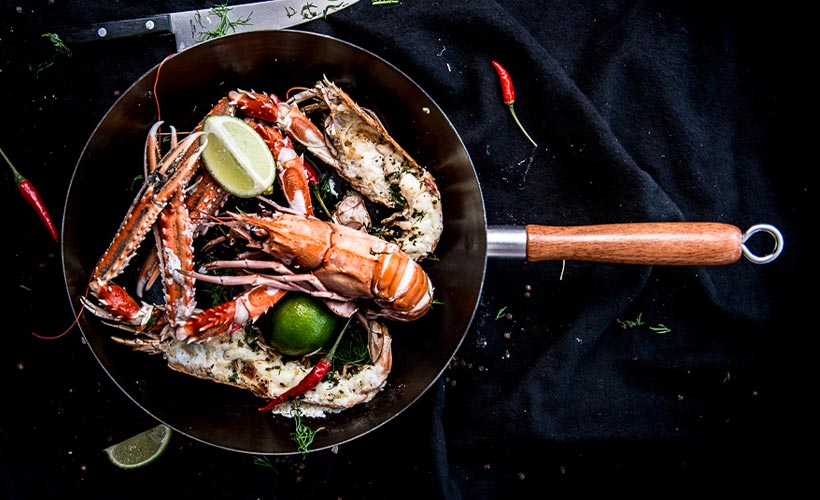How to Cook and Eat Langoustines?

If you are reading this article, it is clear that you want to know more about how to cook langoustines.
Thankfully, you are in the right place as we will describe the most common ways to cook this delicious crustacean.
Anybody who is considering langoustines clearly has good taste too, because it is a phenomenal ingredient that is incredibly flexible. There are a number of ways you can cook it and it goes well in most dishes.
About
Also known as ‘Norway lobster’, langoustines are a sweet and succulent option at mealtimes.
Their alternative moniker is well earned, as they are part of the lobster family. In fact, you can consider them lobster’s cheaper, smaller cousin. That being said, they are just as delicious as their pricier relative.
Cooking langoustines is not a difficult task either, so you shouldn’t feel daunted. You simply need to follow a few easy steps and you will have a delicious seafood meal on the dinner table in no time.
Fresh langoustines that are cooked to perfection are a culinary work of art and one which you will be able to create after reading this article.
First, we must run through a couple of small things.
For instance, it is worth noting that much of the time, langoustines are bought frozen. Therefore, before we share our favourite cooking methods for the Norway lobster, here is a brief and important outline around defrosting the ingredient.
Defrosting Langoustines
The most efficient method for defrosting langoustines is to wrap them in foil and place them in a chilled refrigerator for about 12-14 hours.
After doing this, simply put them in a bowl and rinse. Once they are dry (you can quicken up that process by patting them with a paper towel), they are ready to cook.
Once you have defrosted langoustines, the best option is to cook them the same day, as they perish fast. Ideally speaking, your Norway lobster will be cooked as soon as it is thawed. You don’t want to defrost it and then leave it to go bad.
It should go without saying, but never refreeze a langoustine after you have defrosted it.
Cooking Langoustines
The most common way to cook these tasty guys is by boiling them in salted water.
We did tell you that it was easy!
It isn’t the only way to cook them, but we will run through the other methods a little later.
Whatever you choose, if you buy live langoustines, you should always place them in the freezer for 30 minutes to stun them first.
If boiling, follow these steps:
- The first step is to boil a pot of salted water. (One tbsp of salt to one litre of water is the ideal ratio here.)
- Then, add the Norway lobster in batches, cooking for three to four minutes each.
- It is easy to check if they are cooked. Look at the underside of the tail. If ready, the meat will have turned a delicious looking white.
- When ready, simply take them out of the water (be careful!) and put them on a platter with some dip, lemon wedges and salt. Delish!
If you are not a fan of the boiling method, then worry not. Langoustines are wonderful on a barbecue and can be grilled to a point of near perfection.
To do this, they should be cut in half (lengthways) and cooked for a few minutes. You can also poach and pan-fry these little crustaceans.
If either of those methods take your fancy, then you first need to peel the langoustines.
You can do this by blanching them: this is done by putting them in boiling water and then plunging them into cold water.
This will make the shell more peelable, which will make your life much easier.
Now, we have discussed the cooking of langoustines, it is time for the most important bit.
How to Eat Langoustines
Eating langoustines is easy: simply pull the tail away from the head, break the carapace and enjoy the succulent meat. You can pick it out with a pick, or just use your hands.
Sucking of the head is allowed too, but it isn’t for everyone!
A dish with Norway lobster doesn’t have to be complicated. Langoustine meat is delicious with just a bit of mayonnaise, salt, and pepper.
Of course, if you want to put in a little more effort, they also go wonderfully well in salads, curries, and a host of other dishes.
You now know how to cook langoustines with ease. We have no doubt that the scrumptious cousin on the lobster will be a beautiful addition to the menu in any home or restaurant.
Bon Appetit!
